JAJSK72A june 2020 – october 2020 UCC23514
PRODUCTION DATA
- 1
- 1 特長
- 2 アプリケーション
- 3 概要
- 4 Revision History
- 5 Pin Configuration and Function
-
6 Specifications
- 6.1 Absolute Maximum Ratings
- 6.2 ESD Ratings
- 6.3 Recommended Operating Conditions
- 6.4 Thermal Information
- 6.5 Power Ratings
- 6.6 Insulation Specifications
- 6.7 Safety-Related Certifications
- 6.8 Safety Limiting Values
- 6.9 Electrical Characteristics
- 6.10 Switching Characteristics
- 6.11 Insulation Characteristics
- 6.12 Typical Characteristics
- 7 Parameter Measurement Information
- 8 Detailed Description
- 9 Application and Implementation
- 10Power Supply Recommendations
- 11Layout
- 12Mechanical, Packaging, and Orderable Information
6.12 Typical Characteristics
VCC= 15 V, 1-µF capacitor from VCC to VEE, CLOAD = 1 nF for timing tests and 180nF for IOH and IOL tests, TJ = –40°C to +150°C, (unless otherwise noted)
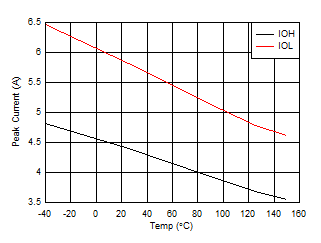
| CLOAD = 180-nF |
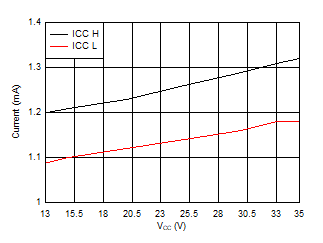
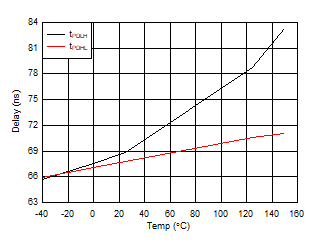
| CLOAD = 1-nF |
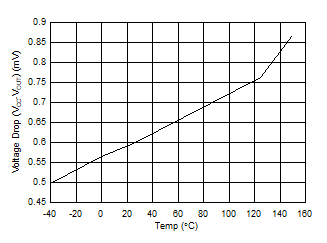
A.
Figure 6-8 VOH (No Load) versus Temperature| IOUT = 0mA |
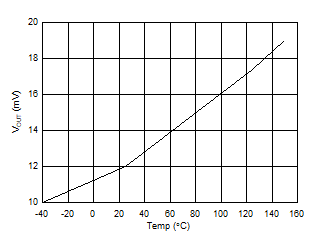
A.
Figure 6-10 VOL versus Temperature| IOUT = 20mA (sinking) |
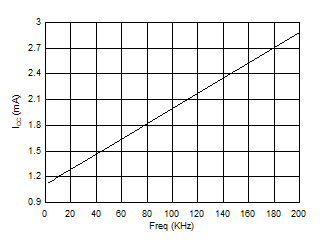
A.
Figure 6-12 Supply current versus Frequency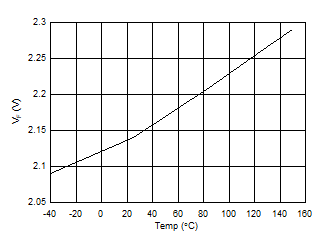
A.
Figure 6-14 Forward voltage drop versus Temperature| IF = 10mA |
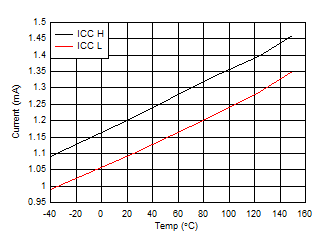
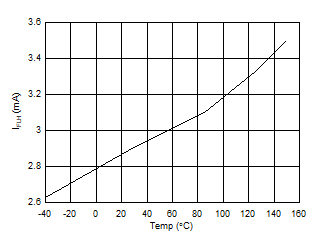
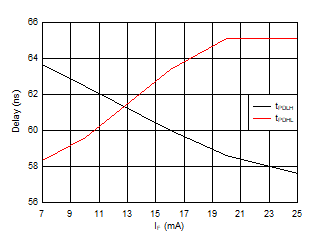
| CLOAD = 1-nF |
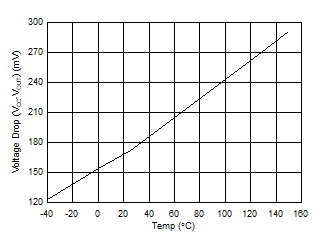
A.
Figure 6-9 VOH (20mA Load) versus Temperature| IOUT = 20mA (sourcing) |
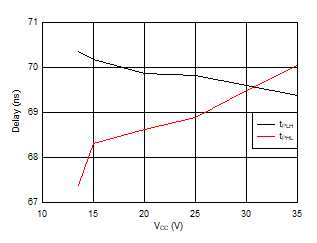
A.
Figure 6-11 Propagation delay versus Supply voltage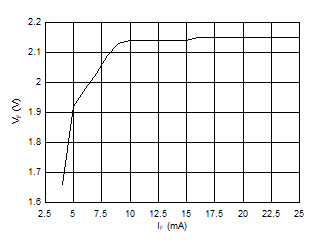
A.
Figure 6-13 Forward current versus Forward voltage drop| TA = 25°C |